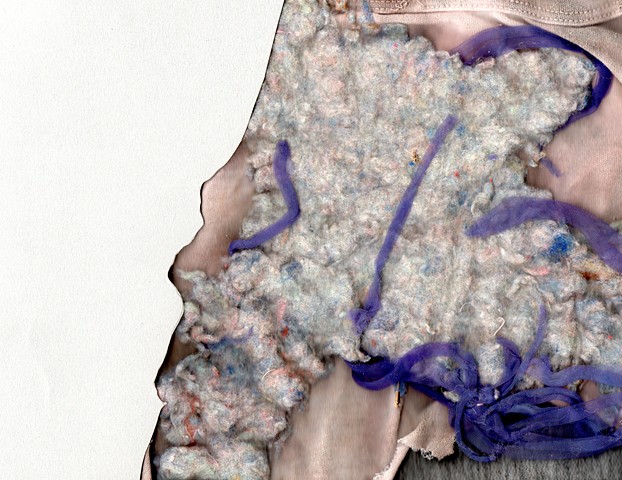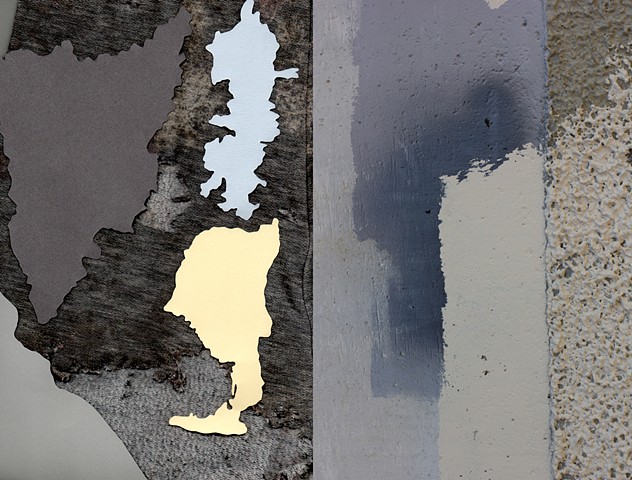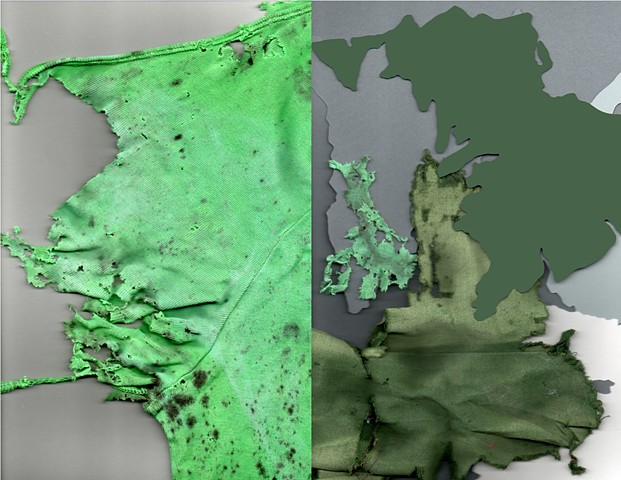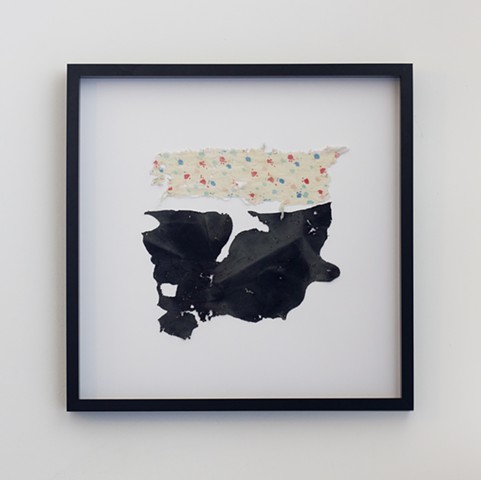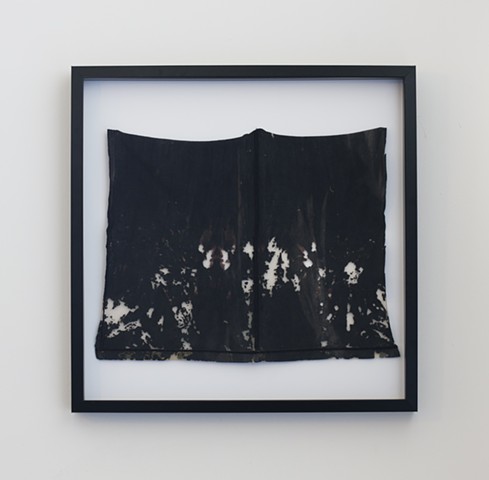Watershed
On the side of the creek bed, sandwiched between layers of mud, a blue fold winks at me. Tugging at the fabric, the clay wall crumbles slightly. I get a stick and dig around it. Alternating digging and pulling in a tug-of-war with the cliff. Gradually it loosens and then it tightens again. The fold has unfurled enough to allow me to wrap both hands around it. I give it a yank. It tears and I stumble. A scrap of baby blue fabric lies limp in my muddy hands, the rest of its body stubbornly encased in a bank of dirt. Looking at my dusty prize, I make out a faint diamond patterned in the weave. A cotton-polyester blend maybe? I put it in my backpack and walk on through the dry creek. An occasional jogger runs by. I continue my collecting mission, kicking pieces of ceramic sewer pipe and broken bottles out of the way.
It’s January and the rains have turned the canyon into textured green mat, punctuated by yellow sour-grass flowers and circular nasturtium leaves. In a couple months, the daisies and wild radishes will bloom in a feral bouquet of purple and yellow. The canyon will become a party of garden escapees. By June it will be brown again. Leaving the canyon to the hardier native shrubs and the eucalyptus, palms, and rogue jade plant. But now, in January, walking in the creek, below its banks, my body is bifurcated by green. Dense vegetation swallows my head. I follow a small tributary while scanning the coarse gravel under my feet. Looking up, I see a rust-colored tent nestled in a thick brush of lemonade berry. I turn back and walk up to the main path. A middle-aged couple smiles a quick greeting as I pass. Their dog sniffs at me and I pet him.
I climb out of the canyon into the neighborhood. On my way home, I peek through the green mesh at the construction site on the top of the ridge. They already demolished the small office complex and are now in the process of re-grading the lot for an apartment building. Large tractors push hills of dirt around. The extra dirt will have to be hauled away, but that wasn’t always the case. Chunks of concrete and broken tile still decorate the creek bed, along with the more delicate ceramic and porcelain pieces of other more domestic dumpsites. Lighter plastic trash and glass make up the newer additions to the creek. At the lower end of the canyon, where it grows shallow and the dirt path turns into asphalt and houses, the debris and mud is trapped behind a small stone dam. During heavy rains, the water runs over the rocks to trace the creek’s former path to the bay.

